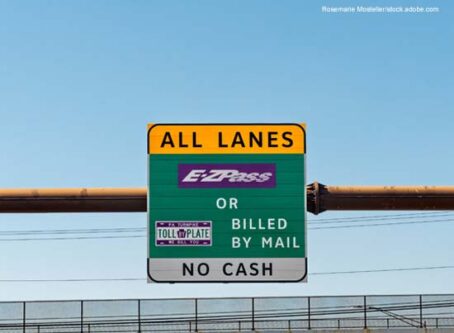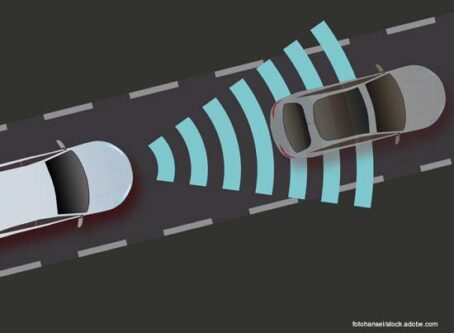Six states pursue, approve new speed limit rules
Speed limit rule changes are an annual pursuit at statehouses from coast to coast. Less than two weeks into the new year, multiple states already have legislation under consideration to make speed limit rule revisions.
The Owner-Operator Independent Drivers Association believes roadways are safest when all vehicles are allowed to travel at the same rate of speed. The Association does not advocate for a specific speed limit.
Michigan
A Michigan bill is intended to address “flaws” in how the state sets local roadway speed limits.
Michigan law states that an engineering and safety study must be conducted to modify a speed limit. Additionally, speeds on state and local roads must be rounded up to the nearest multiple of 5 mph of the 85th percentile standard.
HB4012 would update how the state observes the 85th percentile speed rule – the speed at or below which 85% of vehicles travel in free-flowing traffic.
Specifically, the state would be given flexibility to round down the 85th percentile speed when necessary. Local officials could set the speed to any multiple of 5 mph within 5 mph of the 85th percentile.
Rep. Bradley Slagh, R-Zeeland, is the bill sponsor. He has used the example of the 85th percentile speed on a roadway with an average speed of 37.6 mph. HB4012 would give the state flexibility to set the speed at 35 mph instead of requiring a bump up to 40 mph.
Slagh said he has heard from community officials who do not like the existing method of setting speed limits. They criticize the practice for basing local speed limits solely on metrics and not on commonsense factors such as pedestrian safety and road visibility obstructions.
“We must make this very simple change to state law to empower communities to keep all road users safer,” he said in previous remarks.
The legislation also would remove the requirement that an engineering and safety study be conducted to alter a speed limit. Instead, a modified speed limit could be determined by traffic engineering practices that provide “an objective analysis of the characteristics of the highway.”
Additionally, the bill would permit a speed limit to be set below the 85th percentile if an engineering and safety study showed a situation with hazards to public safety that is not reflected by the 85th percentile speed. A speed limit could not be set below the 50th percentile speed.
HB4012 was introduced during the 2023 regular session. In October, House lawmakers voted 100-10 to advance the bill to the Senate, where it awaits consideration during the second year of the two-year session that runs through 2024.
New Jersey
One New Jersey Senate bill also covers the 85th percentile formula.
Sponsored by Sen. Declan O’Scanlon, R-Monmouth, S1652 would use the formula to set speed limits on limited access highways that include the New Jersey Turnpike and Garden State Parkway.
O’Scanlon said that virtually all drivers traveling the state’s under-posted limited access highways are breaking the law.
“Either they/we are all reckless, homicidal maniacs, or our method of setting speed limits is seriously flawed,” he stated.
If signed into law, the New Jersey Department of Transportation and other state traffic agencies would use 85th percentile studies to set speed limits. State agencies would reevaluate speed limits at least every decade or when a road is substantially changed.
O’Scanlon said adopting the formula is a better option for setting speed limits than relying on politicians and officials to make the correct decision.
Critics have argued drivers face multiple distractions while behind the wheel. They’ve voiced concern that decreased reaction times due to distractions and possible faster speeds would make wrecks more devastating.
O’Scanlon said he is not looking to change how fast people drive. Instead, he wants speed limits to reflect the speeds people already are driving.
He added that the change would result in “the smoothest, safest level of traffic flow and inflict the least amount of arbitrary punishment on people behaving reasonably.”
Also included in the bill is a provision to limit fines for speeding violations. Citations handed out for speeding on a roadway where a traffic study has not been completed would be limited to $20.
S1652 awaits consideration in the Senate Transportation Committee.
New York
Across the state line in New York, two identical bills would boost the speed limit for cars and trucks.
The Empire State permits all vehicles to travel 65 mph on interstate highways and other limited access roads.
Pursuits in the Assembly and Senate would authorize 70 mph speeds for all vehicles. Specifically, the state DOT and the New York Thruway Authority would be permitted to implement the change.
Sen. Tom O’Mara, R-Big Flats, wrote in a bill memo the change would keep New York in line with maximum speeds in many other states.
“The majority of states across the country have state speed limits that exceed 65 mph,” O’Mara wrote. “New York has failed to keep up with the rest of the country by not adopting a more efficient speed limit. This bill would correct this inefficacy by allowing for a 70-mph speed limit where appropriate.”
Both bills, S2209 and A5044, were introduced during the 2023 regular session. Since the first of the year, they have been re-referred to their respective transportation committees for year two of the two-year session.
North Carolina
A North Carolina House bill that has carried over from the 2023 regular session would boost the existing 70 mph speed limit on the state’s fastest roadways.
H386 would authorize the state DOT to increase the speed limit to 75 mph on any interstate highway or controlled-access highway. The rule would apply to affected roadways inside or outside the corporate limits of a municipality where it is deemed “reasonable and safe” to make the change.
Supporters have noted many people already are driving above 70 mph and that some highways are designed to handle increased speeds.
The bill is in the House Transportation Committee.
Speed changes made over past year
Two states – Montana and Texas – revised speed limit rules over the past year.
In Montana, the rule change gives the state’s Transportation Commission full authority to change speed limits throughout the state.
The state has an 80-mph speed limit for cars and a 70-mph limit for trucks on rural interstates. State law permits the commission to lower or to leave speed limits unchanged.
In October, Gov. Greg Gianforte signed into law a bill to add the authority to raise speed limits.
In Texas, the use of variable speed limits is authorized.
Variable speed limits use speed limit signs that change to slow drivers to avoid creating heavy traffic congestion. The Texas A&M Transportation Institute provides information on how the process works.
Since Sept. 1, the Texas Transportation Commission has been authorized to establish variable speed limits. The authorization allows the temporary lowering of a speed limit to address inclement weather, congestion, road construction or any other condition that affects “orderly movement of traffic.”
The new law clarifies that variable speeds must be based on an engineering and traffic investigation.
Variable speeds could not be set less than 10 mph below the posted speed limit. LL









